A note from the editor: Final edits were made to this piece on the night before the Magic 30th Anniversary Announcement. Minor tweaks were made after the announcement of Reserve List cards being reprinted with alternate backs, in order to reflect the current news. The timing of the announcement and the release of this article is pure coincidence.
A card image flashes on the screen, Twitch chat explodes with reactions, and Magic fans take in the first look at a new mechanic. Word spreads fast, but screenshots even faster, until it reaches a Discord server far removed from the front lines. Seconds after the card image is posted in the spoilers channel, someone confidently replies back: “This is what’s going to kill Magic.” Then a week passes, a month, a year, and nothing happens. A new set is launched, a screenshot lands on a different server, and the cycle begins anew.
For Magic’s 20-year anniversary, Mark Rosewater put out his famous article, “Twenty Things That Were Going To Kill Magic.” It talked about everything from the Reserved List, to the modern card frame, to planeswalkers. All were spots in the timeline that created controversy, to the point of having existential discussions. Despite those bumps in the road, we stand here today with a game more popular than ever.
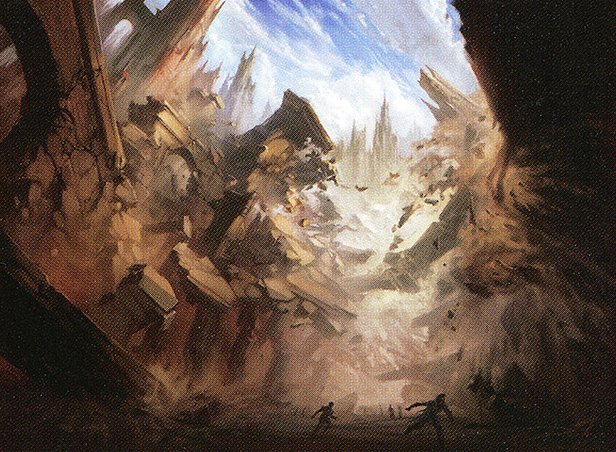
Structural Collapse by Sam Burley
But since that article, there have been changes and events that call into question the long-term health of Magic: The Gathering. We’ve had Modern Horizons sets upend eternal formats—twice. We’ve had a card quality crisis that lead to the curling of foils and nonfoils alike. We’ve seen a rapid rise of bannings, thanks to the new FIRE design paradigm. We’ve had the Companion mechanic completely overhaul deck design, to the point of needing an errata after the cards were printed. We’re seeing Unset cards make their way into Commander and Legacy. Finally, there’s the looming behemoth of Disney, preparing Lorcana to challenge Magic head-on.
Magic has come close to the cliff but has never slipped off. That’s not to say that it can’t someday happen if the makers of the game aren’t careful.
This is going to be a two-part series. Today we’re looking at what how Magic: The Gathering could end. For the sake of discussion, I’ll define the “death” of Magic as a point in which Wizards of the Coast stops producing new paper and digital cards. For Part Two, we’ll theorize on what the death of Magic would be like in the real world, and where we’d go from there.
Two Big, Necessary Disclaimers
It has long been said that a change in Reserved List policy would create a mass destabilization of the card economy. With a sudden, rapid loss of value in card collections, stores and collectors could abandon the game in droves. This is what people feared happening when Chronicles first saw print in 1995, leading to the creation of the Reserved List in the first place. There have been bends in the policy over the years, as recent as the Magic 30th Year Anniversary. We may see more of gold border reprints, but we’re never getting a tournament-legal Black Lotus again. It’s too much of a risk for Hasbro to take with their most successful product right now.
Also, we’re not going to talk about Magic ending as a result of a real-world cataclysmic event. If there’s some collapse of civilization like in The Walking Dead, Magic is assuredly going to go with it, alongside a lot of other things we know and love.
Now that we have those out of the way, let’s look at the things that are more likely to actually happen.
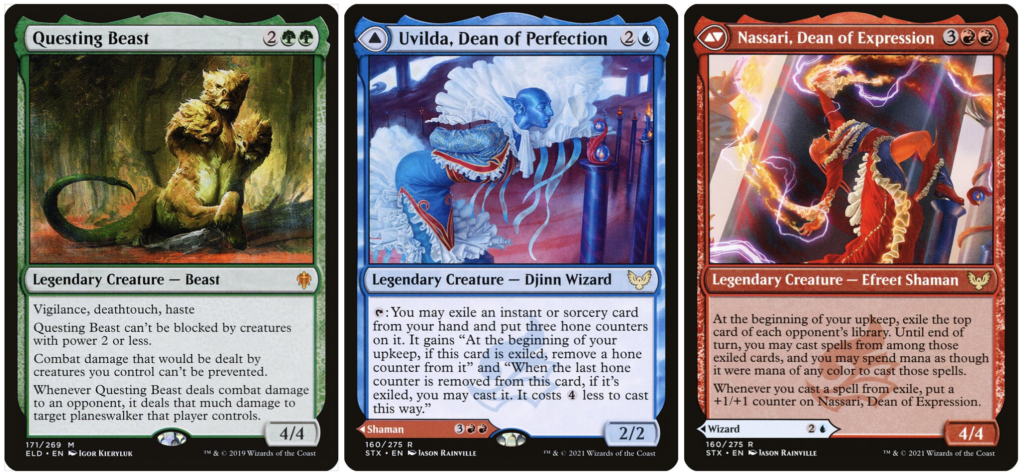
Power/Complexity Creep
“Power Creep” is the concept of new card designs getting progressively more powerful over time. There’s a delicate balance to be struck as a game ages. On one hand, you want to keep things fresh and exciting, and give players ways to stay engaged. On the other hand, you don’t want to hit a ceiling and bring everything crumbling down with you. Yu-Gi-Oh is a cautionary tale here, where Konami’s run of pushed cards almost caused the game to slip out of their grasp.
“Complexity Creep” refers to the growing density of text and game interactions. The more difficult a card is to understand at first pass, the harder it is for a player to get excited about using it in the game. For instance, how many times did you read through the Strixhaven deans before you understood what they do? You could also apply this to cards that are difficult to track in paper environments, like Crystalline Giant or the Night and Day mechanic in our recent return to Innistrad.
FIRE design principles upped the power and complexity of Magic sets in recent years. If Wizards were to consistently up the power level of each set, to ensure that new cards get played, then it could spiral out of control. Players would have to choose between either playing the most recent cards, or resign themselves to a format that’s frozen in time, like Premodern or Old School.
In my opinion, this option is unlikely to bring the end of Magic, but only if managed properly. The power creep in Magic is real, but it has slowed relative to the days of cards like Oko, Thief of Crowns and Field of the Dead. Also, power level creep can be tempered with community feedback and tournament data. These changes come slowly, so in the meantime we have to adjust expectations to achieve a new normalcy.
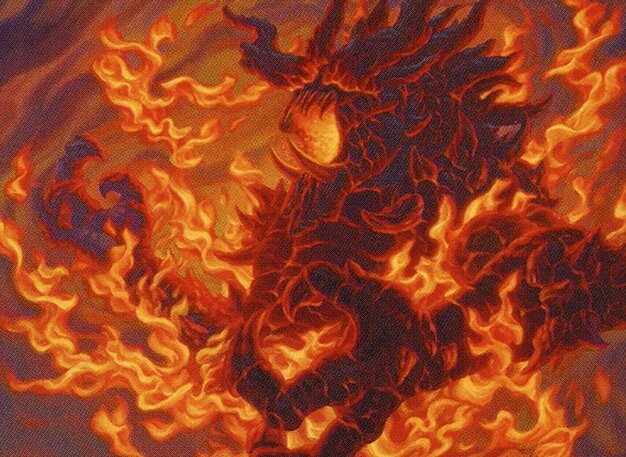
Fury by Raoul Vitale
Forced Digitization
Magic has always been an in-person game before anything else. There are friends to interact with face-to-face, cards to shuffle, and shiny things to look at. But if there were a heavy push on digitizing the game, with the intention of phasing out paper play, then that could harm Magic as we know it. You could argue that going to digital-only wouldn’t kill the game outright, but if you turned off the faucet of paper cards, then what difference is Magic from any other game you can play online?
Magic Arena offers monetization opportunities that aren’t attainable with selling paper cards. The production of paper products is also a large overhead cost for Wizards, so eliminating that would raise the profitability of the game as a whole. From a business perspective, the temptation is there.
Despite the allure of heavier monetization, it’s a massive risk for the game’s future. Currently, the most popular way to play Magic is in-person with three friends beside you. Commander’s recent success is arguably the strongest thing holding Magic back from becoming a purely digital game. Digitization might not completely kill Magic, but for many, it would be enough.
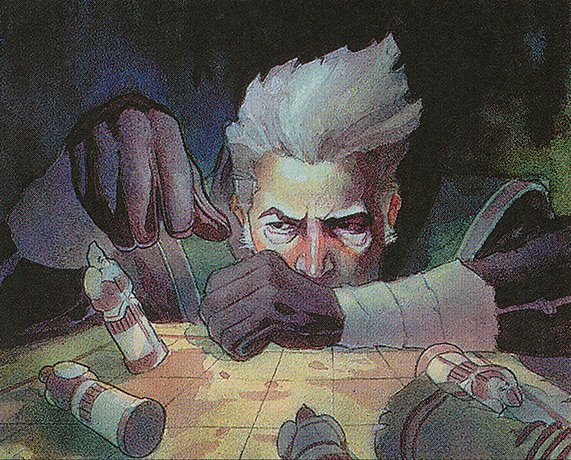
Despondency by D. Alexander Gregory
Business Missteps
The death of Magic might not come on the battlefield, but in the boardroom.
Some fans fear that Universes Beyond represents a slippery slope, as more intellectual properties cash in on the Magic space. It started with the Secret Lair for The Walking Dead, and has grown into things like Warhammer commander decks and an entire Lord of the Rings set. Some fans are worried that this is going to dilute the visual identity of the game. If Monopoly can come out with a Jeff Foxworthy edition, then who knows what Hasbro could try and put into a card frame?
While crossovers are a hot topic for debate, business missteps can also include things like price of products, frequency of reprints, support for paper play, or the print quality of cards themselves. All of these factors play into the success of Magic, and they can all contribute to its downfall if ignored for too long.
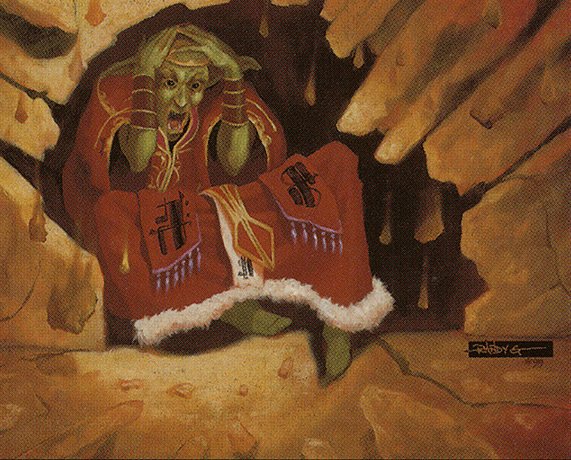
Crumbling Sanctuary by Randy Gallegos
This remains the most likely scenario leading to Magic’s end. Serious missteps by Wizards or Hasbro could compromise the hard work that has lead up to this point. A problematic card can get banned, but bad business can bring everything down at once.
Despite what random internet commenters say, Wizards and Hasbro are, in fact, committed to making this nerdy game enjoyable for years to come. It’s too fun and profitable to not keep around. There are also enough passionate people designing Magic cards to keep the game from being boring. However, that doesn’t mean that their efforts can’t be sabotaged from within.
As we saw with Gerry Thompson’s article on developing Modern Horizons, playtesting for that set was mostly carried out by a group of four people. If Wizards R&D is starved of its most valuable asset, its people, then the game will suffer along with it. It’s difficult to think that a billion-dollar company like Hasbro could starve Wizards of resources, but it doesn’t take working in a corporate job for long to realize that things like this can happen. A lot can change when a few powerful people in a room all agree with each other.
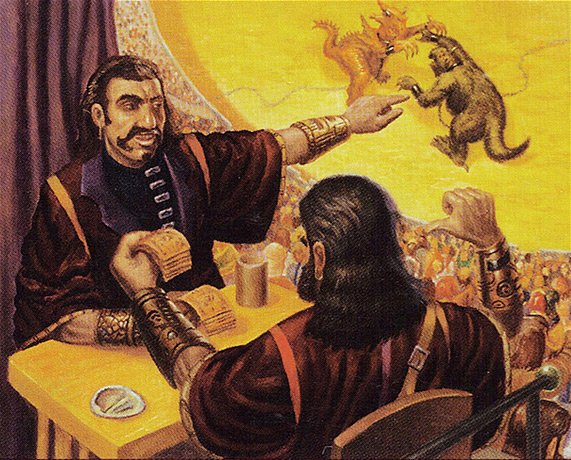
Risky Move by Jerry Tiritilli
Moving Forward
Magic has taken a lot of punches on the chin in the past 30 years. Despite the setbacks, it keeps growing and thriving. While there are always hot-button topics like card availability, power creep, and growing competition, the most likely source of a killing blow would come from the business of Magic itself. The chances right now are small, but they’re never zero.
For Part Two, we’ll get into what a post-Magic world could look like, and how we might navigate that together.
Travis is a writer and photographer from the wooded foothills of New York, currently living in South Carolina. He plays nearly every Magic format, but has a special love for Legacy, Premodern, and Canadian Highlander. He has loved Magic since Starter 1999, but he champions having a healthy mental and financial relationship with the game. When not playing games, he enjoys cycling, tea, and dog parks. You can follow his exploits here on Twitter and Instagram.

